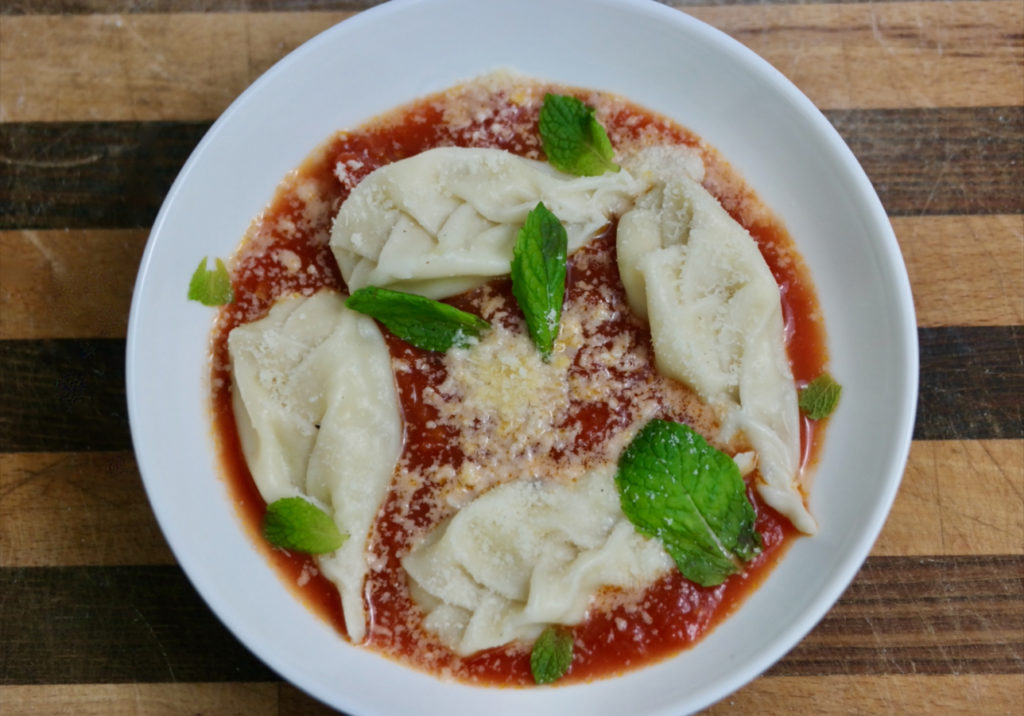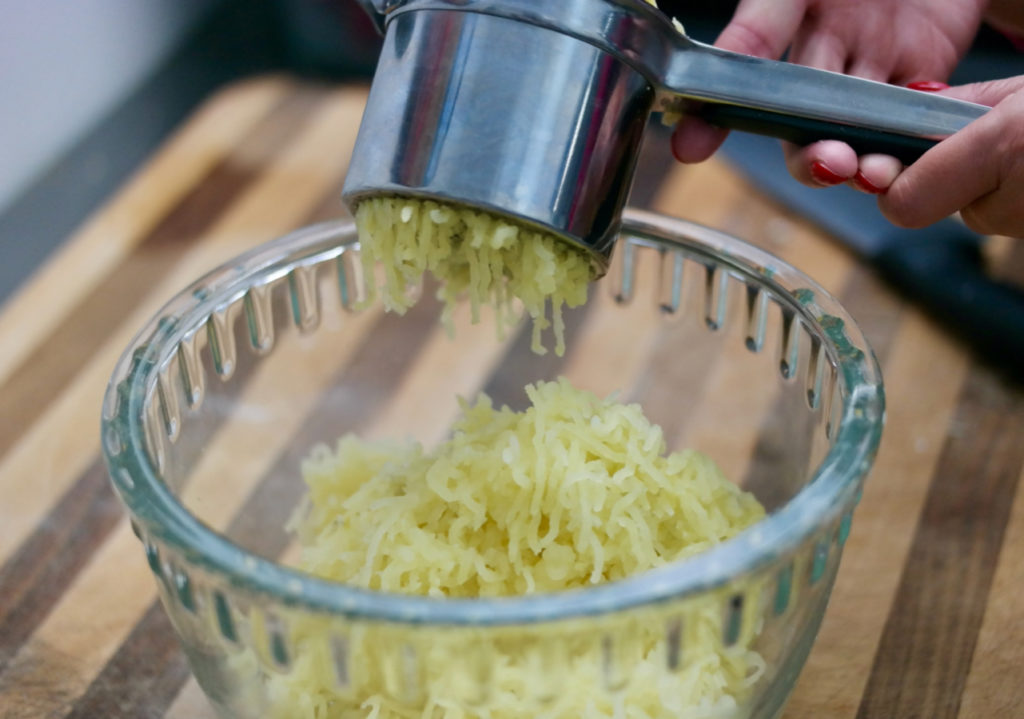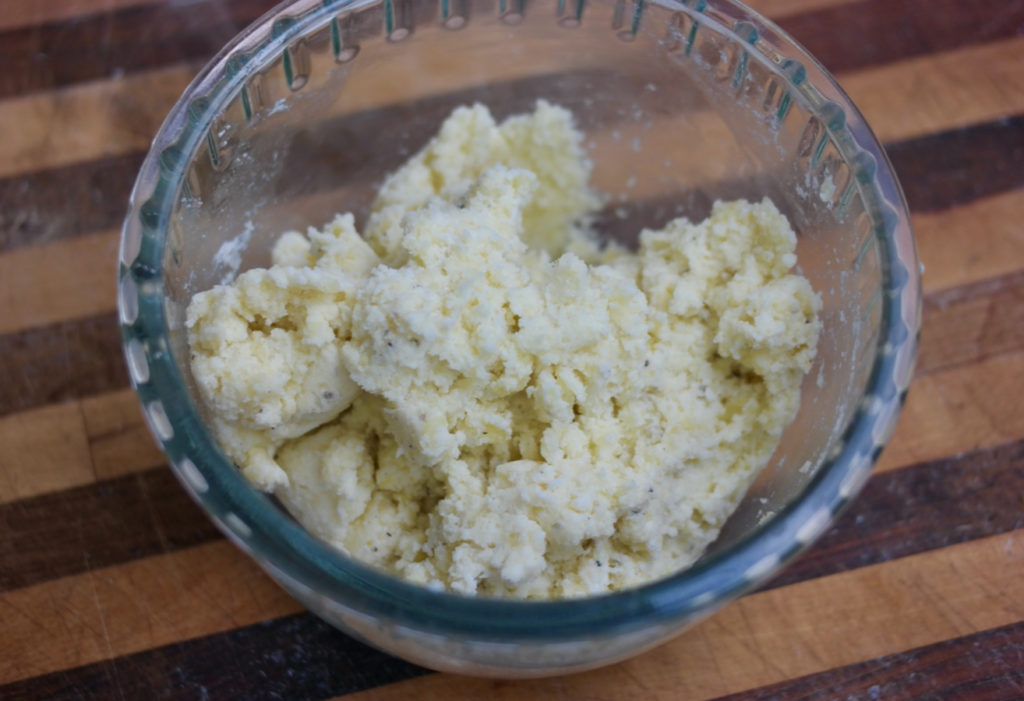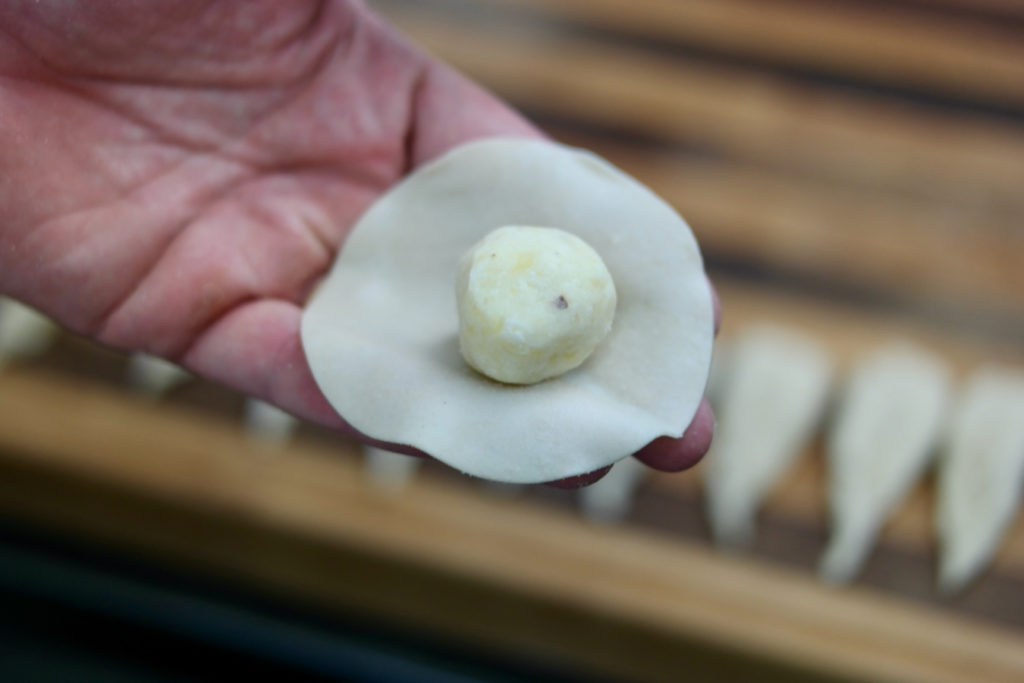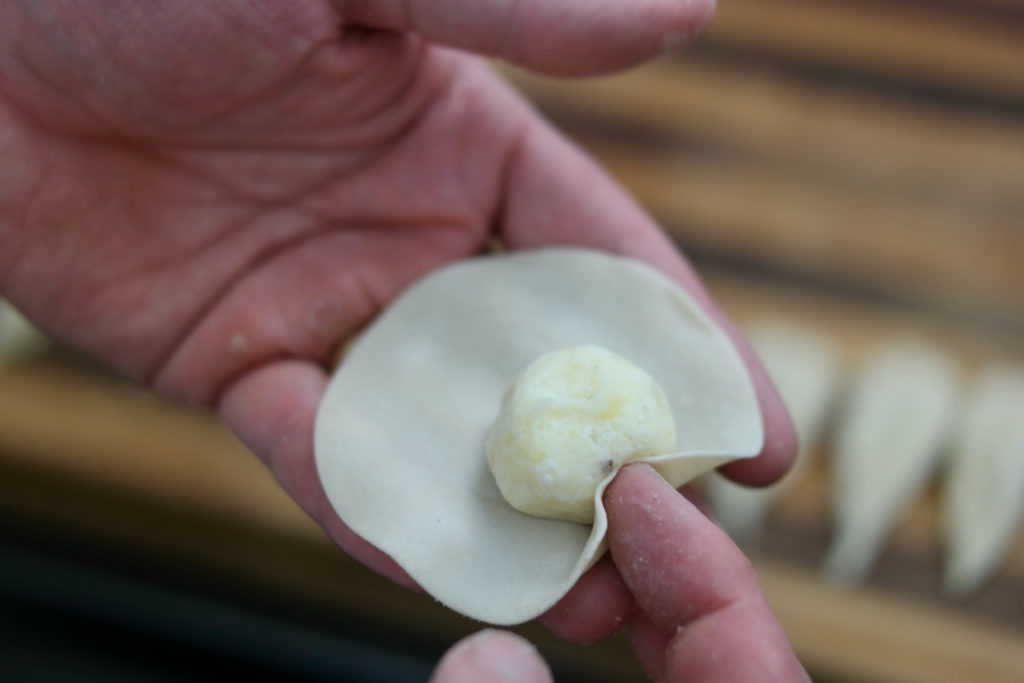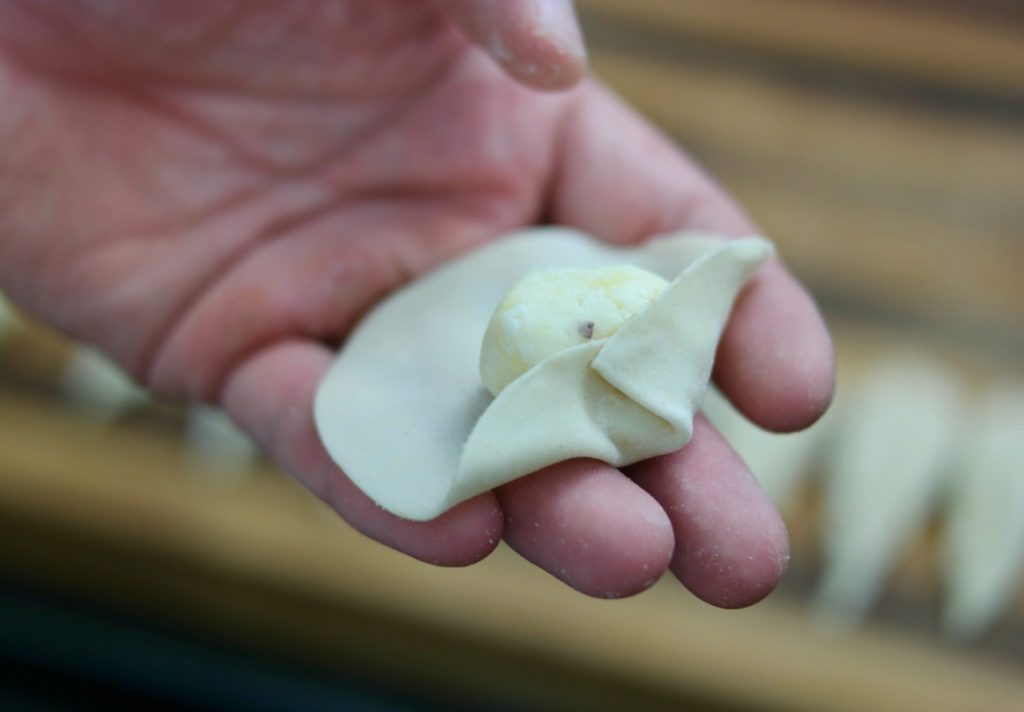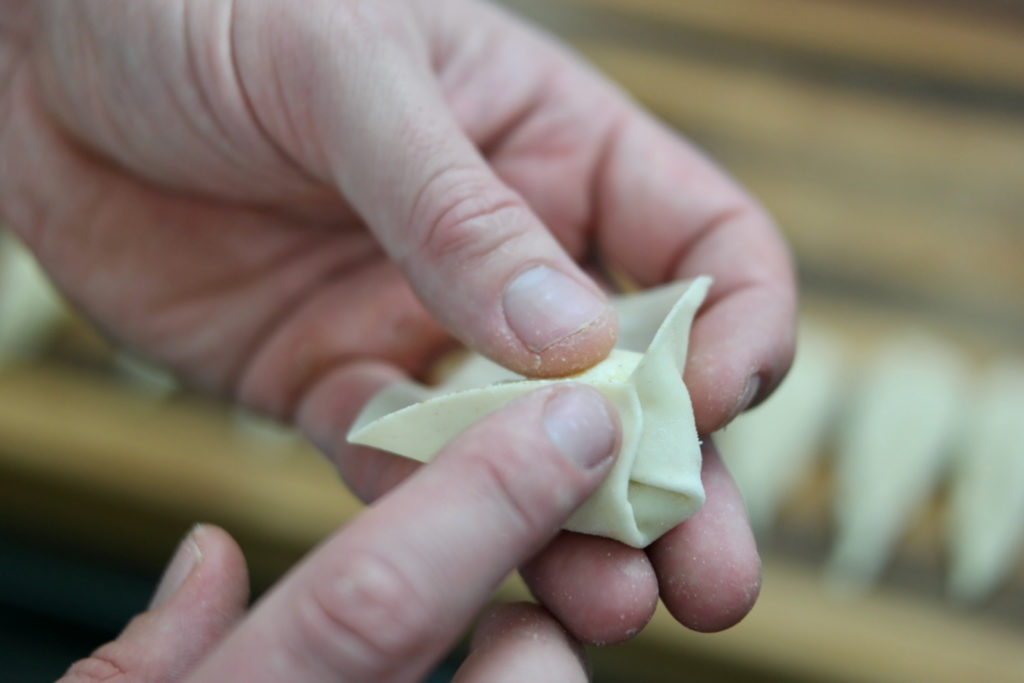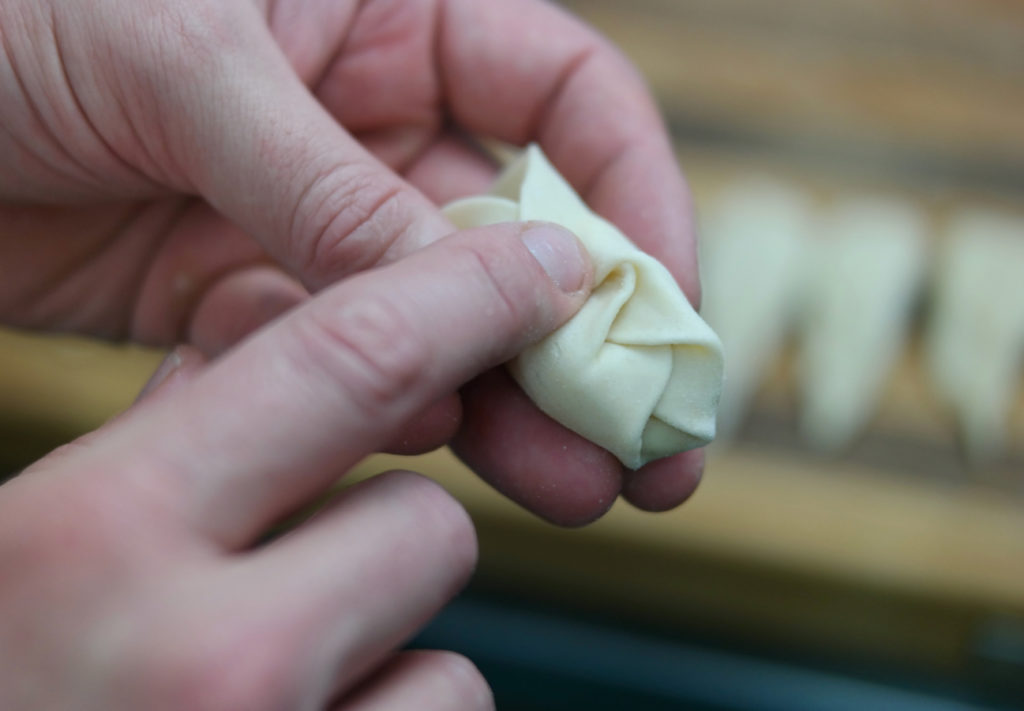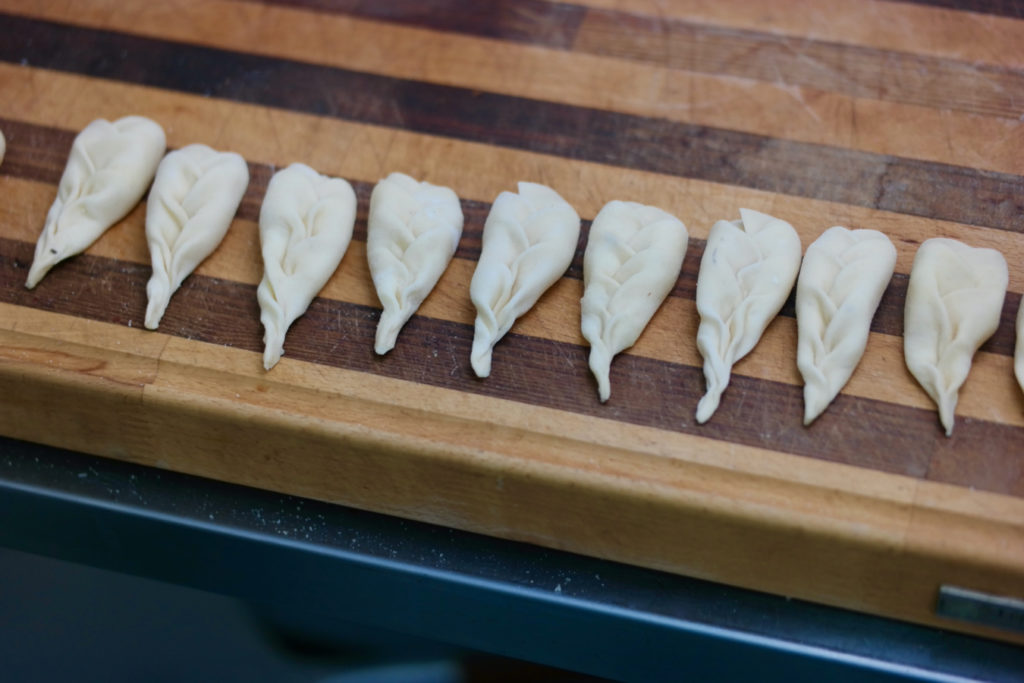Check out that picture – this is by far the most interesting pasta we’ve tried our hand at making. It’s a stuffed pasta called culurgiones, from the island of Sardinia, and they’re special enough that they’re served mainly on feast days and other holidays. These were definitely the most complicated of all the filled pastas we’ve made, but we really enjoyed how cool they looked, and with the unique filling they’re a little bit different from everything else we’ve done so far. If you’ve got a few hours and some deft hands, you can follow us along to see how you can shape and serve this very cool pasta.
You’ll need:
- Semolina flour
- 4 Yukon gold potatoes
- Pecorino cheese
- Ricotta cheese
- Fiore sardo cheese (we got some from Eataly)
- 00 flour
- 3 cans of whole peeled San Marzano tomatoes
- Olive oil
- Garlic
- Red pepper flakes
- Mint
You’ll start by making a semolina dough, by following the first two steps here. While the dough is resting, you can prepare the filling: take your potatoes and place them in a pot with enough water to fully cover them, bring the water to a boil, then turn the heat down to a simmer. Cook the potatoes like this for 25 minutes, then fish them out of the water and when they’re cool enough to handle, peel the skins off. Press the whole potatoes through a ricer and into a bowl.
Place a cup of ricotta in a mesh strainer to remove any extra liquid, then add it to the bowl with the potato, along with 1/4 cup of grated Pecorino and 1/3 cup grated fiore sardo, plus some salt and pepper. Mix everything together, then cover your bowl and refrigerate until you’re ready to use.
Now set up your stand mixer with a pasta roller and make sure it’s dialed to the 1 setting. Cut your dough into four pieces and take one piece (keep the rest wrapped up) and flatten it out with your hands. Send it through the pasta roller, then fold both ends in to the middle and send it through the roller again. Do this two more times, then set the roller on the 2 setting and put the dough through – this time it should come out thinner. Turn the roller to the 3 setting and put the pasta sheet through again two more times, then take the resulting dough sheet and lay it on a piece of parchment paper dusted with 00 flour. Sprinkle more 00 flour on top, then repeat this process to roll out the rest of the dough in the same way.
When all the dough has been rolled, take one sheet and use a 3 1/2-inch round cookie cutter to cut out circles. Measure out a 16 gram portion of filling on a food scale, then use your hands to roll it into a ball and place in the center of one circle.
Use your index finger to press the top of the circle into the ball of filling …
… and fold one corner in on top of where you pressed, then fold in the other corner on top of that.
Bring the newly created corners – the edges of the folded parts of the dough – in and press them on top of where you brought in the previous corners, and again fold one on top of the other.
Continue this process, folding in one side and then the other like a braid …
… until the filling is sealed inside. Once you completely cover the filling, shape the remaining dough into a tail, like this:
Line two baking sheets with parchment paper scattered with semolina flour and place the culurgiones on it without overlapping. Once all the pasta is shaped, put the sheets in the fridge and let them chill and firm for 45 minutes.
Now you can start on the sauce by thinly slicing 8 garlic cloves. Also, crush all your tomatoes by hand into a bowl, then pour in the extra liquid from the cans as well. Warm 1/3 cup of olive oil in a Dutch oven over low heat and add in your garlic to cook for just a minute, then stir in the tomatoes, using a mixing spoon to break up any large chunks. Add in a sprinkling of red pepper flakes (we got a little heavy handed, to make for a slightly spicy sauce) and let everything cook together for 30 minutes.
When the culurgiones are ready, bring a pot of heavily salted water to a boil and cook the pasta for 4 minutes, then scoop it out with a spider strainer. Place a good amount of sauce into the bottom of a bowl, then put the pasta on top. Add in some mint leaves and some grated fiore sardo, and now you’ve got your delicious culurgiones!
So these weren’t exactly easy, as you can see. First of all, we had to pull out a bunch of different kitchen tools here: our stand mixer and pasta roller, a ricer, a mesh strainer, a cookie cutter, a food scale, and a spider strainer. Luckily we already had all these tools, but you might have to do some ordering if you don’t have these things and want to take a stab at culurgiones. Then the shaping method took some practice as well but we eventually got it down to an assembly line, where Miriam measured out the filling and Cyril was the one folding and pressing each piece. All in all it took around four hours from start to finish, which definitely was a commitment, but we enjoyed the process. We’d never encountered this pasta before, so getting to make it by hand and then eating the result was fun. Due to their geographic origin, on a island separate from the rest of Italy, culurgiones are pretty different from other filled pastas – potato is an unusual filling ingredient, but here it works well mixed with three cheeses and stuffed into a thick dough shell. And pairing the pasta with just a really simple tomato sauce lets the filling and the shape shine through. We enjoyed the time we spent, so if you’ve got a few hours and a whole bunch of kitchen implements, try it out yourself!
